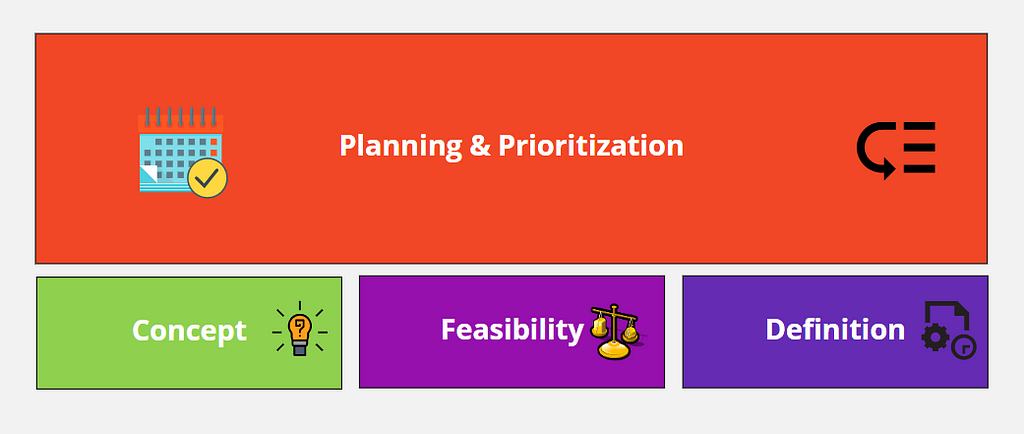
The Role of Product Manager in Product Planning
Last Updated on August 27, 2021 by Editorial Team
Author(s): Saniya Parveez

Introduction
Product planning and strategy formulation are important perspectives of any product manager to depict his/her long-range vision for the products. Moreover, it is important to think and plan about the meeting of customers' needs in more creative and effective ways. The end goal is more challenging and interesting to help products to stand in the competitive market with respect to customer need and speed of the market. The success of vision depends on the contributions of product developers, designers, program managers, etc. They play important role in the acceleration of product to market and time to profit. Understanding the approach of the business model also plays important role in the planning of products because it directly impacts revenue streams, quality issues, project funding.

Planning & Prioritization are important from depicted in the above diagram because it requires thinking more strategically about possible product business to make it more valuable to customers. Prototype and design are the most critical part to showcase to customers to understand their interest customers.
Planning and Prioritization
Product planning and prioritization shapes product owners to think more strategically about business value generation by-products and give an opportunity to improve this by adding values and planned deliverables. This is the main part to understand the customers' needs and interests.

Nowadays the industry is practicing iterative planning & prioritization to handle the product strategy and planning.

Different aspects of Planning & Prioritization are as below:
Design and Prototype
This is a very crucial part of any product owner because his/her main goal is to assimilate customers and capture market insight and problems as per customer integration. Customer problems and market insight are sketched in a more simple way to make design and prototype easy. Basically, a prototype is a draft version of a product that empowers you to investigate your ideas and determine the purpose behind a feature or the overall design concept to the customer before spending time and money on product development.

After the implementation of the design and prototype, it is shared with target customers for feedback. Then business logic behind the idea is handled to see if its possible development will further meet the purposes of the business.
A product manager must below questions from himself/herself during the design phase:
- Would a customer actually require this product/feature, and why?
- How much effort would it take to develop this product/feature?
- Could we enunciate this further in a product business problem?
- Does the design validate or augment the value statement?
Think Customer First
It is very important to improve the experience of customers. A product manager must stimulate the customer’s thought processes in his/her mind. It might be like below:
- Think about the customer’s way of life
- Figure out how to develop interactions with customers that might extend beyond the text or email.
- Offer a customer the ability to enroll in something for the product. (Google is doing via GPS locator, provide a review, upload photo, etc.)
Other aspects consideration for the customers:
- Evading expenses
- Feeling safe or protected
- Saving time
- What benefit would a customer receive?
- What is the customer striving to do at a provided time?
- What the customer was trying to accomplish?
- Improving system performance and potential

Development and Release Planning
Every time a new or enhanced product requires to be developed, developers or engineers need to understand what they are supposed to develop and when. That's why a product roadmap is used to create themes, epics, stories, features, etc. A product roadmap is a representation of the vision, goals, and strategies set forth by the Product Manager.
It is very nice to use the feature roadmap for release planning and the product roadmap as a strategic or business planning tool.
Release Planning
Release planning should be as staging. Staging is the term used when you are placing boxes in an exact location and planning for ultimate loading onto a truck to be taken someplace.
With product features, the product manager wants to be able to segment what is to be developed so that he/she can decide what he/she is able to release quickly versus what he/she has to hold for downstream testing or integration into a larger system. Generally, the product managers create a big list of features and create a backlog.
The release plan must include the below points:
- Bug to fix
- Quick-release to a feature or product.
- User experience
- Integration challenges and complexities
- Features that require to be saved up for a major release of a company’s product portfolio.
- Features that add value that customers will pay for.

Conclusion
Organizational agility is the style of the contest for new businesses. It demands that we work more promptly with a minimum of organizational intervention. It is expected to achieve never-imagined levels of productivity and top levels of product quality, and to make teams together so the business can achieve a competitive edge. For product manager and their teams, it is crucial to be able to constantly deliver value to customers and provide to the company’s strategic success.
The Role of Product Manager in Product Planning was originally published in Towards AI on Medium, where people are continuing the conversation by highlighting and responding to this story.
Published via Towards AI
Take our 90+ lesson From Beginner to Advanced LLM Developer Certification: From choosing a project to deploying a working product this is the most comprehensive and practical LLM course out there!
Towards AI has published Building LLMs for Production—our 470+ page guide to mastering LLMs with practical projects and expert insights!

Discover Your Dream AI Career at Towards AI Jobs
Towards AI has built a jobs board tailored specifically to Machine Learning and Data Science Jobs and Skills. Our software searches for live AI jobs each hour, labels and categorises them and makes them easily searchable. Explore over 40,000 live jobs today with Towards AI Jobs!
Note: Content contains the views of the contributing authors and not Towards AI.
















